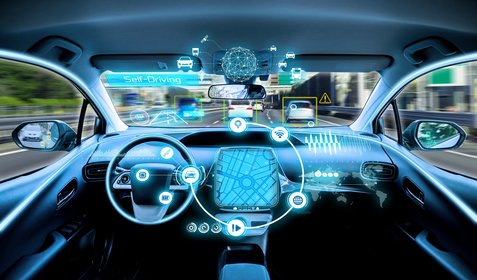
04/07/2018
Automobiles, investments in mobility4.0 to enhance business opportunities
Dino Collazzo
Electric vehicles, connectivity and self-driving systems are the megatrends responsible for the current developments in the automotive sector.
No longer a revolution, but rather a reality. That is how the technological evolution currently affecting the automotive field should be considered. The development of connected automobiles, Artificial Intelligence and electrification have long been included in the industrial planning of both manufacturers and aftermarket companies, and within the next few years vehicles will have profiles and functions that are radically different from the ones we are accustomed to driving or seeing nowadays, becoming real hubs of technological innovation and development, the driving force behind what many define as a "new spring" for the automotive industry. A digital transformation that will impact production processes, the creation of increasingly “intelligent vehicles”, as well as consumer habits, leaning significantly towards sharing rather than possessing.
Just think, for example, at the huge quality leap voice controls have made thanks to machine learning. If, until recently, standard phrases were the only way to interact with an infotainment system, it is now possible to formulate more complex questions and obtain precise answers. Not only. The progress of Adas systems (Advanced driver assistance system) has made driving safer and in some cases even autonomous. Parking sensors, automatic emergency braking, lane change warning and speed control devices are now standard features in most passenger cars and are rapidly developing. All this translates in an expected 26 billion dollar turnover on the global market by 2025, according to a forecast by Bain & Company, over three times more compared to the 8 billion recorded in 2016.
As a result, modern vehicles are now able to process a huge number of data, thanks to a computing power comparable to 20 average PCs, with 100 million lines of programming codes and are able to process up to 25 gigabytes of data per hour. In this complexity lies the most important challenge for the automotive industry and its supply chain. In fact, being able to design software and smart components to be installed on board our vehicle able to connect with the surrounding environment - road signs for example as well as sensors that will transform urban areas into smart cities - will enable the automotive industry to withstand the fierce competition from a number of hi-tech companies. Protecting the sector’s business will be crucial, especially if one considers that, according to a study by the Autopromotec Observatory on Pwc data, the market is expected to reach a global value of € 142 billion by 2022. Of course, these are forecasts, which will likely be influenced by consumer choices and preferences. If, in fact, on the one hand, the desire for greater connectivity is growing, one cannot help noticing that also concerns about digital security and privacy protection is likewise reaching red alert levels. Two elements that, if not properly addressed, would constitute an obstacle to the global spread of connected vehicles. And that is precisely why the entire automotive industry must accelerate investment in cyber-security and data anonymization and protection.
Connected cars and autonomous driving
The Internet of things and autonomous driving are the key elements responsible for changing the idea we have of cars. In fact, thanks to intelligent software, sensors, radar and wireless connections, new vehicles can easily be likened to electronic devices on four wheels, real personal assistants able to support us in our daily needs, and if necessary, to take control and autonomously drive us, in a not so distant future, from home to work without having to put our hands on the wheel.Just think, for example, at the huge quality leap voice controls have made thanks to machine learning. If, until recently, standard phrases were the only way to interact with an infotainment system, it is now possible to formulate more complex questions and obtain precise answers. Not only. The progress of Adas systems (Advanced driver assistance system) has made driving safer and in some cases even autonomous. Parking sensors, automatic emergency braking, lane change warning and speed control devices are now standard features in most passenger cars and are rapidly developing. All this translates in an expected 26 billion dollar turnover on the global market by 2025, according to a forecast by Bain & Company, over three times more compared to the 8 billion recorded in 2016.
As a result, modern vehicles are now able to process a huge number of data, thanks to a computing power comparable to 20 average PCs, with 100 million lines of programming codes and are able to process up to 25 gigabytes of data per hour. In this complexity lies the most important challenge for the automotive industry and its supply chain. In fact, being able to design software and smart components to be installed on board our vehicle able to connect with the surrounding environment - road signs for example as well as sensors that will transform urban areas into smart cities - will enable the automotive industry to withstand the fierce competition from a number of hi-tech companies. Protecting the sector’s business will be crucial, especially if one considers that, according to a study by the Autopromotec Observatory on Pwc data, the market is expected to reach a global value of € 142 billion by 2022. Of course, these are forecasts, which will likely be influenced by consumer choices and preferences. If, in fact, on the one hand, the desire for greater connectivity is growing, one cannot help noticing that also concerns about digital security and privacy protection is likewise reaching red alert levels. Two elements that, if not properly addressed, would constitute an obstacle to the global spread of connected vehicles. And that is precisely why the entire automotive industry must accelerate investment in cyber-security and data anonymization and protection.








